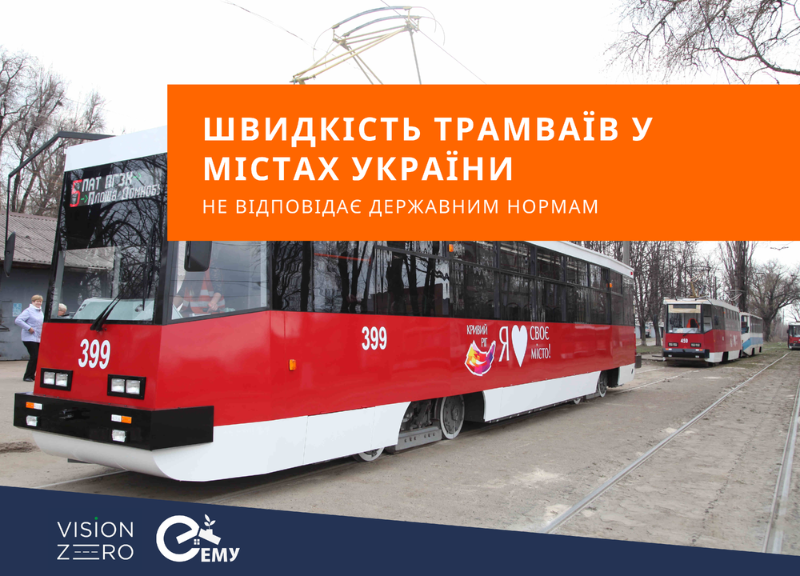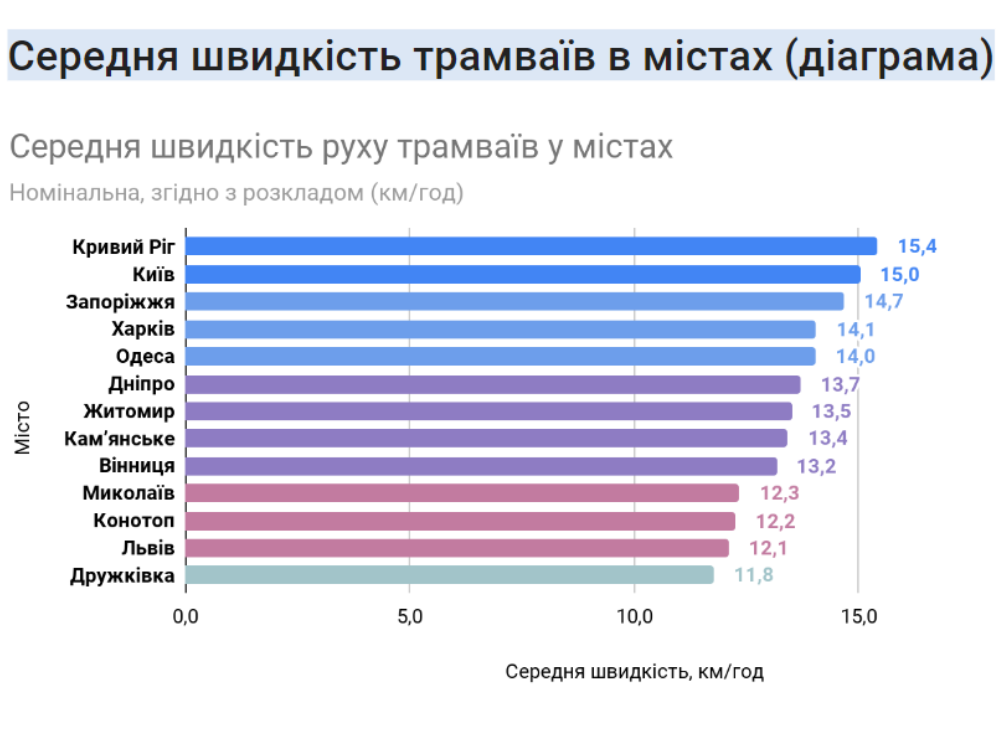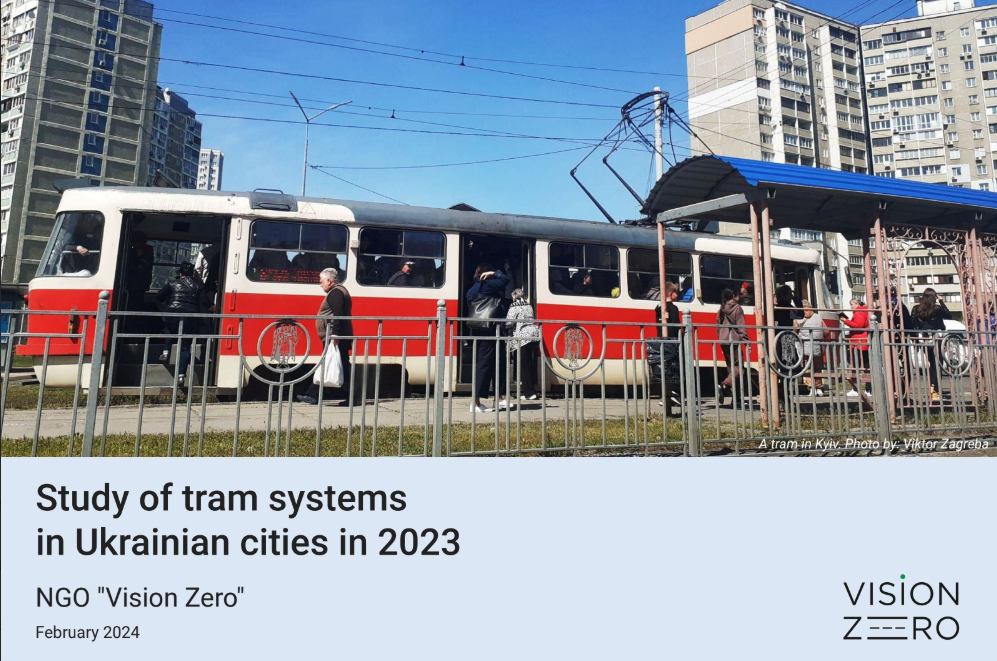
The average speed of trams in the cities of Ukraine is 13.5 km/h. This indicator does not comply with the state construction regulations DBN B.2.2-12:2019 "Planning and development of territories", which provide for a route speed of this type of electric transport of 15-20 km/h. Less than a third of all existing tram routes in the country reach this level, and only two cities reach this level. This is evidenced by a study conducted by the non-governmental organization "Vision Zero", reports the website of the "Energy-efficient Cities of Ukraine" Association.
The fastest tram networks are Kryvyi Rih (15.4 km/h), Kyiv (15 km/h) and Zaporizhzhia (14.7 km/h) . According to the authors of the study, the good performance of these cities is due to the fact that they have a significantly higher number of tram lines on a separated canvas and on streets without heavy traffic than other cities. Trams run the slowest in Druzhkivka (11.8 km/h), Lviv (12.1 km/h) and Konotop (12.2 km/h).

How to speed up trams?
To improve tram traffic in the cities of Ukraine, the authors of the study offer several recommendations to state authorities and local governments. First of all, the central bodies of executive power need to recognize that the problems of tram transport are national in nature, and therefore require actions at the state level in the form of updated state policy and funding mechanisms.
Secondly, the state should create mechanisms of state and international financing for updating the tram infrastructure. And the third recommendation at the state level concerns the introduction of a system of operational financing of public transport in accordance with the Association Agreement and EU Regulation 1370/2007 (obligation to provide public transport services and payment of "transport work" to operators).
The recommendations of the NGO "Vision Zero" to local self-government bodies provide for the following measures:
- during repairs, reconstructions and new construction of tram lines, to provide structurally separated movement of trams from the traffic flow or such an organization of traffic so that the timetable of the tram does not depend on the traffic of the streets;
- to ensure, with the help of traffic management, the priority of tram traffic at unregulated intersections and to organize adaptive traffic regulation with the priority passage of trams at intersections with traffic light regulation;
- revise the timetables of the routes in the direction of acceleration on the lines after reconstructions, major or current repairs and after the prompt elimination of technical deficiencies of the infrastructure that lead to speed restrictions;
- update the outdated rolling stock of trams to a modern one that meets the requirements of accessibility and energy efficiency, in particular with the involvement of (future) state co-financing from international sources.
Research methodology
The team of the NGO "Vision Zero " analyzed 13 of the 18 existing tram networks in Ukraine (excluding occupied cities) as part of the "Research of tram systems in the cities of Ukraine in 2023". These systems consist of 106 routes with a total length of 2103 km.
The work does not take into account light rail lines, as this mode of transport is not an urban street car and rather belongs to the LRT (Light Rail Transit) category. This type of transport in Ukraine operates in Kyiv and Kryvyi Rih. For these cities, only data from regular tram routes are taken into account.
The research was carried out on the basis of passport data of tram routes and timetables provided by utility companies-carriers. In cities where utility companies refused to provide data, the authors of the study had to use other sources, which could affect the accuracy of the data and the error of the results.
Click on this image to read the full version of the study.

